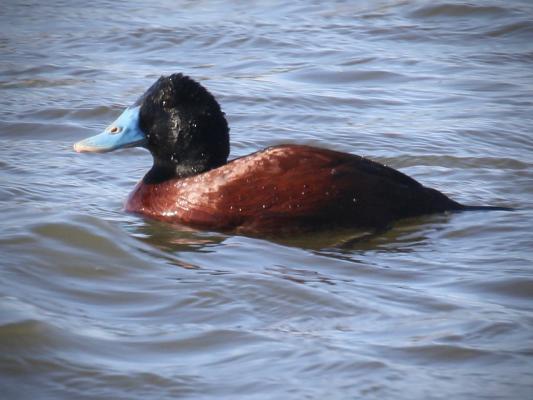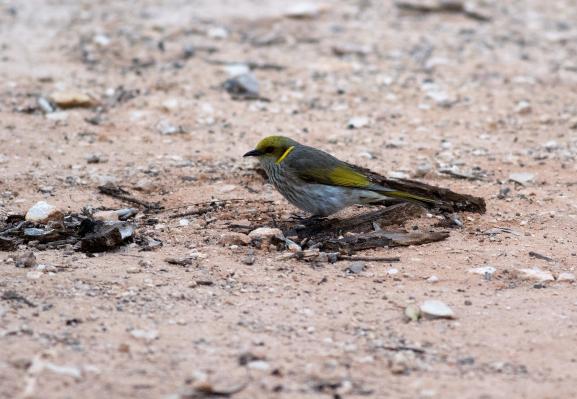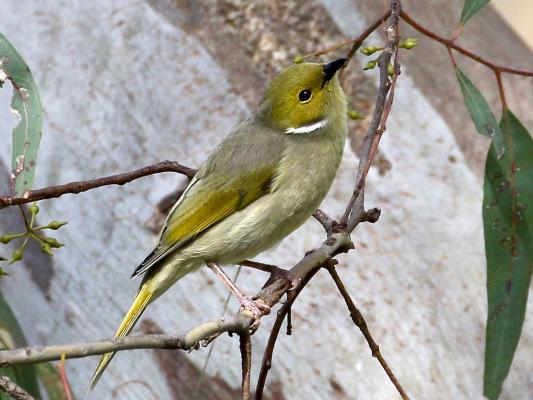I am writing this in Port Augusta, so I am getting closer to home.
I’ve been having the time of my life exploring coastal Western Australia and the Nullarbor.
The highlight of my trip has definitely been a visit to Eyre Bird Observatory, which is located near Cockelbiddy in Western Australia. I was looked after beautifully by volunteer caretakers Hugh and Michelle Crisp.
Despite some wet and cold weather I was able to explore the bush around the observatory, plus the beach area where I helped Michelle and Hugh conduct a wader survey. I’ve never been to such a remote beach in my life, and despite this we picked up a ute tray full of plastics that had washed up on the beach.
We also saw a New Zealand fur seal, a recently arrived Curlew sandpiper in breeding plumage, many red-capped plovers and the unusual sight of 26 banded stilts swimming in the ocean.
I also saw a few new birds (for me), namely a chestnut quail thrush, a blue-breasted fairy wren and purple-gaped honeyeater.
There was also a small flock of Major Mitchell cockatoos that were very entertaining and cheeky when they came to the bird baths to drink. I was surprised at how many birds that are commonly seen in Ocean Grove also thrive around the observatory, as the climate and conditions are so much drier there compared to the Bellarine.
The New Holland honeyeaters were everywhere, as well as red wattlebirds, singing honeyeaters, grey butcherbirds, pied currawongs, silvereyes, welcome swallows and spiny-cheeked honeyeaters.
At the observatory I saw the most amazing thing – a pygmy possum sitting on top of a small shrub. The possum was smaller than a mouse, and so delicate.
I was advised not to drive to the ‘Head of the Bight’ observatory at the Great Australian Bight, as you have to pay to go and look at the view. I decided to go anyway as I’ve always wanted to see the ‘Bight’ up close and I’m so fortunate that I did, as about 10 metres from the viewing platform were about 10 magnificent southern right whales, including three calves.
The young whales spent most of the time that I watched them jumping out of the water like flying fish. The whales were so close I could hear the noises that they made and watched them swim under the water as the water was crystal clear.
I received an email from Kevin, who took some wonderful images of birds at Inverleigh, including a white-plumed honeyeater. He also saw a blue-billed duck, superb-fairy wrens, a brown falcon, a few cattle egrets and a grey butcherbird at Lake Lorne in Drysdale. I’ve included Kevin’s image of the white-plumed honeyeater and mine of a yellow-plumed honeyeater that I saw at Eucla, for comparison of the two species.
I received an email from Barrie from Curlewis, who wanted to know where the little pied cormorants that he observes in good numbers flying over Port Phillip Bay during the day, roost at night. I replied that I think that they roost on piers and trees around the bay, and also at Lake Lorne and McLeods Waterholes. If anyone else has any further observations to add to this, feel free to email me and I’ll pass the information on to Barrie.
I also have to apologise to Lee and his wife Genevieve. Lee sent me some photos which were published in the Voice and I did refer to Lee as a woman in that article. So sorry for changing your gender Lee, and I now know that when you send me some more of your bird images that I will not make the same mistake twice.









